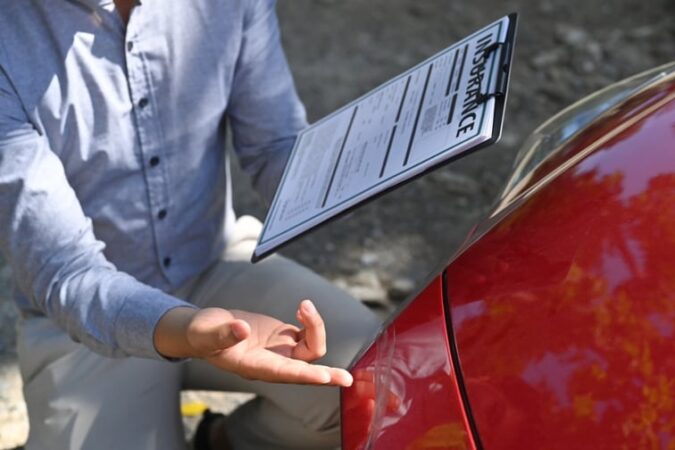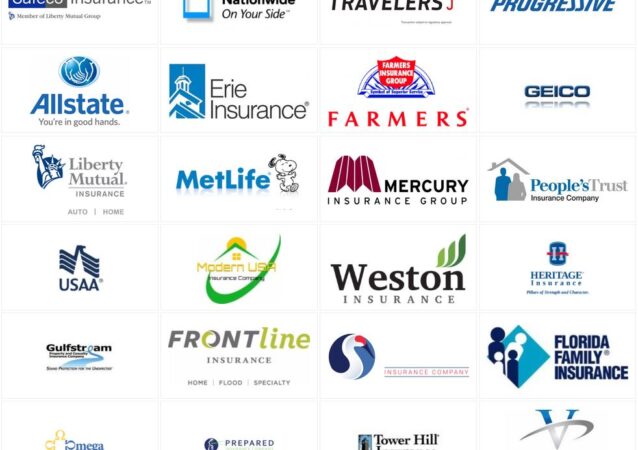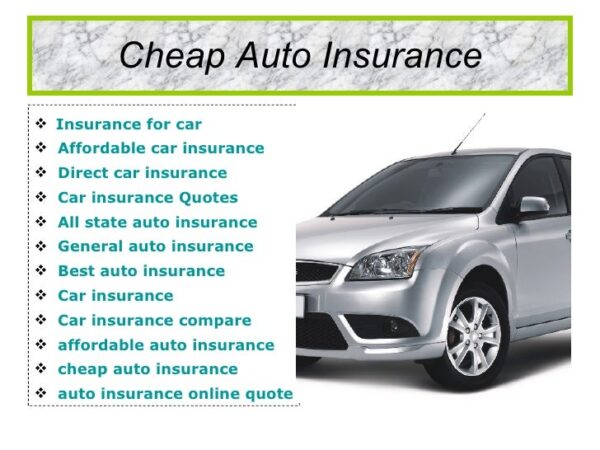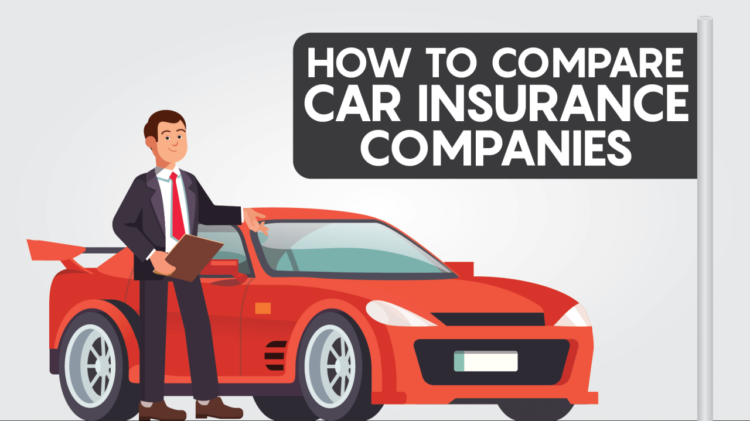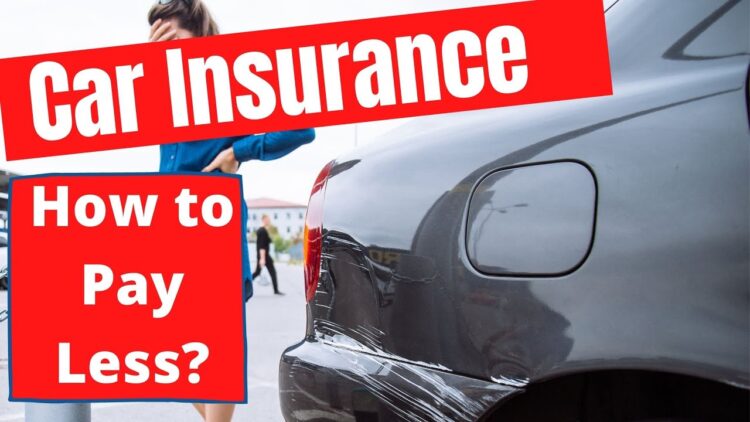
How do insurance companies decide to total a car? It’s a question that often pops up after a serious accident, leaving drivers wondering if their beloved ride is headed for the junkyard. The decision isn’t based on a single factor, but rather a complex equation that considers repair costs, market value, salvage value, and more. Think of it like a game of numbers, where the fate of your car hangs in the balance.
Insurance companies, like any business, are in the game of managing risk and keeping costs down. When a car is severely damaged, they need to weigh the cost of repairs against the value of the vehicle. If the repair costs exceed a certain threshold, the insurance company may deem the car a total loss, meaning it’s not worth fixing and they’ll pay you out for its value.
Factors Determining Total Loss

So, you’ve been in a fender bender, and now you’re wondering if your car is going to be declared a total loss. It’s a stressful situation, but understanding how insurance companies make that call can help you navigate the process. The decision to total a car is based on a complex interplay of factors, and here’s the breakdown:
Repair Costs
The primary factor influencing a total loss determination is the cost of repairs. If the cost of repairing the damage exceeds a certain threshold, the car is likely to be declared a total loss. This threshold varies depending on several factors, including the car’s age, make, model, and market value.
Vehicle’s Market Value
The market value of a vehicle plays a crucial role in the total loss decision. If the cost of repairs exceeds the vehicle’s market value, it’s generally more economical for the insurance company to declare the car a total loss and pay you the market value rather than investing in expensive repairs. Market value is determined by factors such as the car’s age, mileage, condition, and demand in the used car market.
Salvage Value
The salvage value of a vehicle is the estimated amount the insurance company can recover by selling the damaged car to a salvage yard or other buyer. The salvage value can influence the total loss determination. If the salvage value is high enough, it can offset the cost of repairs, making it more financially viable for the insurance company to repair the car.
For example, if a car has a market value of $10,000 and the cost of repairs is $8,000, but the salvage value is $3,000, the insurance company might decide to repair the car. In this case, the salvage value effectively reduces the cost of repairs to $5,000, making it less expensive than declaring the car a total loss.
Insurance Policy Terms and Conditions
The terms and conditions of your insurance policy can also impact the total loss determination. Your policy may have specific guidelines or thresholds regarding repair costs, market value, and salvage value that influence the decision-making process.
State Regulations
State regulations can also influence the total loss criteria. Some states have laws that set specific thresholds for repair costs or market value that must be exceeded before a car can be declared a total loss.
Damage Assessment and Evaluation: How Do Insurance Companies Decide To Total A Car
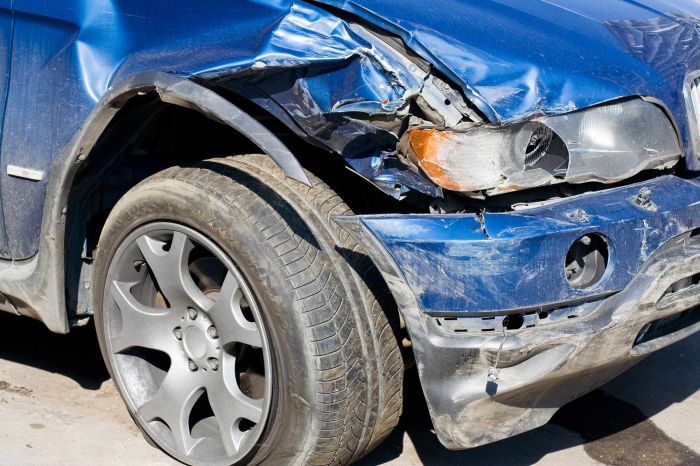
After a car accident, the insurance company has a crucial job: to figure out how much damage was done and if it’s cheaper to fix the car or just call it a total loss. This involves a careful assessment of the damage and a thorough evaluation of the car’s worth.
Damage Assessment Process
The damage assessment process begins with a thorough inspection of the vehicle by a qualified appraiser. They use various methods to determine the extent of the damage and estimate the cost of repairs. Here’s a breakdown of the steps involved:
Inspection and Documentation
- The appraiser will carefully inspect the vehicle, taking detailed notes and photographs of all visible damage.
- They’ll look for things like dents, scratches, broken parts, and fluid leaks.
- They may use specialized tools to assess the severity of structural damage.
Repair Cost Estimation
- The appraiser will use industry standard repair guides and databases to estimate the cost of labor and parts.
- They’ll consider factors like the age, make, and model of the vehicle, as well as the availability of parts.
- They may also consult with repair shops to get more accurate estimates.
Independent Inspections
- In some cases, the insurance company may request an independent inspection by a third-party appraiser.
- This is done to ensure that the initial assessment is accurate and unbiased.
- Independent inspections can help to resolve disputes between the insurance company and the policyholder.
Methods for Estimating Repair Costs
Appraisers use various methods to estimate repair costs, depending on the type and severity of the damage.
Labor and Parts Costs
- The appraiser will use industry standard repair guides, such as the Mitchell Repair Information System, to estimate labor and parts costs.
- These guides provide detailed information on repair procedures, labor times, and part prices.
- The appraiser will adjust the estimates based on the specific vehicle and the availability of parts.
Computerized Estimating Systems
- Some insurance companies use computerized estimating systems, such as CCC ONE, to automate the repair cost estimation process.
- These systems use databases of repair information and part prices to generate estimates quickly and efficiently.
- However, it’s important to note that these systems may not always provide accurate estimates, especially for complex repairs.
Direct Repair Programs
- Some insurance companies have direct repair programs, which allow policyholders to choose a pre-approved repair shop.
- These programs can streamline the repair process and ensure that the work is done to a high standard.
- However, it’s important to choose a reputable repair shop that is known for its quality workmanship.
Market Value Determination, How do insurance companies decide to total a car
Once the damage has been assessed, the insurance company needs to determine the market value of the vehicle. This is done to decide if the cost of repairs is greater than the value of the car.
Methods for Determining Market Value
- The insurance company may use various methods to determine the market value of a vehicle.
- Common methods include:
Market Value Guides
- Market value guides, such as Kelley Blue Book and Edmunds, provide estimates of the fair market value of vehicles based on their age, make, model, mileage, condition, and location.
- These guides are widely used by insurance companies and car dealers.
Auction Data
- Insurance companies may also use auction data to determine the market value of a vehicle.
- Auction data provides information on the prices of vehicles that have been sold at auctions.
- This data can be used to determine the current market value of a vehicle.
Appraisal Reports
- In some cases, the insurance company may request an appraisal report from an independent appraiser.
- Appraisal reports provide a detailed assessment of the market value of a vehicle.
- They are often used in cases where the vehicle is unique or has special features.
Role of Independent Inspections
Independent inspections can play a vital role in verifying the damage assessment and market value determination.
Verifying Damage Assessment
- Independent inspections can help to ensure that the initial damage assessment is accurate and unbiased.
- They can also help to identify any hidden damage that may not have been noticed during the initial inspection.
Verifying Market Value
- Independent inspections can also help to verify the market value of a vehicle.
- They can provide an objective assessment of the vehicle’s condition and compare it to similar vehicles in the market.
Damage Evaluation Process
Here’s a table summarizing the steps involved in the damage evaluation process:
| Step | Description |
|---|---|
| 1. Damage Assessment | A qualified appraiser inspects the vehicle, takes detailed notes and photographs, and estimates repair costs. |
| 2. Market Value Determination | The insurance company uses various methods to determine the market value of the vehicle, such as market value guides, auction data, and appraisal reports. |
| 3. Total Loss Determination | The insurance company compares the estimated repair costs to the market value of the vehicle. If the repair costs exceed the market value, the vehicle is declared a total loss. |
| 4. Settlement | The insurance company pays the policyholder the actual cash value (ACV) of the vehicle, minus any deductible. |
The Total Loss Threshold
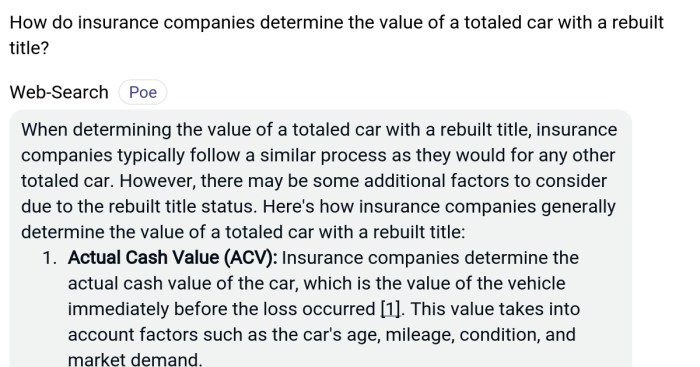
Think of the total loss threshold as the magic number that determines whether your wrecked car gets fixed or goes to the great junkyard in the sky. It’s the point where the cost of repairs surpasses the value of the car itself.
But it’s not just about the repair cost. Insurance companies consider a whole bunch of factors to decide if your car is officially “totaled.”
Factors Determining the Total Loss Threshold
The total loss threshold is influenced by a number of factors, including:
- The car’s market value: This is the price your car would fetch if you sold it in the current market, considering its age, mileage, condition, and other factors.
- The cost of repairs: This includes labor and parts costs, and it’s usually calculated based on estimates from reputable repair shops.
- Salvage value: This is the amount your insurance company can get by selling your totaled car for parts or scrap. It’s a big part of the equation, as it can help offset the repair costs.
- State regulations: Each state has its own set of rules and regulations that insurance companies must follow when determining a total loss.
- Insurance policy terms: Your insurance policy may have specific clauses that affect the total loss threshold. For example, some policies may have a “total loss threshold” clause that specifies a percentage of the car’s value that must be exceeded before it’s considered a total loss.
Impact of Deductibles
Your insurance deductible, the amount you pay out of pocket before your insurance kicks in, also plays a role.
Let’s say your deductible is $1,000 and the cost of repairs is $5,000. Your insurance company would pay $4,000, but you’d still be on the hook for the $1,000 deductible. If the repair cost is higher than the car’s value plus your deductible, it’s likely your car will be totaled.
Total Loss Threshold for Different Vehicle Types
The total loss threshold can vary depending on the type of vehicle.
For example, a luxury car with a high market value might have a higher total loss threshold than a used economy car.
Total Loss Threshold Table
Here’s a simplified table illustrating the total loss threshold based on different vehicle categories and damage levels:
| Vehicle Category | Damage Level | Total Loss Threshold |
|---|---|---|
| Luxury Car | Minor | $10,000 – $15,000 |
| Luxury Car | Major | $20,000 – $30,000 |
| Economy Car | Minor | $5,000 – $8,000 |
| Economy Car | Major | $10,000 – $15,000 |
| Truck | Minor | $8,000 – $12,000 |
| Truck | Major | $15,000 – $25,000 |
Remember, this is just a general guideline. The actual total loss threshold will depend on the specific circumstances of your situation.
Options for the Policyholder
So, your car’s been totaled. It’s a bummer, but at least you’re covered by insurance! Now comes the part where you have to decide what to do with the money. Here’s the deal: you have options. Let’s break it down.
Receiving a Payout
After your insurance company declares your car a total loss, they’ll determine the Actual Cash Value (ACV) of your vehicle. This is based on its condition, mileage, and market value at the time of the accident. You’ll receive a payout for the ACV, minus any deductible you have. You can choose to get the money directly or use it to buy a new car. If you opt for a new car, your insurance company might help you find a replacement vehicle. Just remember, they’ll likely cover the ACV of your old car, not the full price of the new one.
Salvage Rights
In most cases, you’ll have the option to keep the salvage rights to your totaled car. This means you can either sell the vehicle for parts or scrap it yourself. If you don’t want the salvage rights, the insurance company will take possession of the vehicle and dispose of it. If you do want the salvage rights, you’ll need to sign a release form and might have to pay a small fee. Remember, salvage cars are often sold “as is” and may not be roadworthy.
Settlement Options
You’ve got two main settlement options when your car is totaled:
- Cash Settlement: You receive a lump sum payment equal to the ACV of your vehicle, minus your deductible. This gives you the freedom to use the money as you please, whether it’s to buy a new car, fix up your old one, or put it towards something else entirely.
- Replacement Value: This option is often available for newer vehicles. Instead of receiving the ACV, you’ll get enough money to buy a similar vehicle. However, there are usually limits on the replacement value, and you might have to pay the difference if the new car costs more than the payout.
Processing a Total Loss Claim
Here’s a step-by-step guide to processing a total loss claim:
| Step | Description |
|---|---|
| 1 | Report the accident to your insurance company. |
| 2 | Provide all necessary documentation, including your driver’s license, insurance card, and vehicle registration. |
| 3 | An adjuster will inspect your vehicle and determine if it’s a total loss. |
| 4 | The insurance company will calculate the ACV of your vehicle. |
| 5 | You’ll receive a settlement offer, which you can accept or negotiate. |
| 6 | If you accept the offer, you’ll receive a payout and sign a release form. |
| 7 | You can then use the payout to buy a new car, fix up your old one, or put it towards something else entirely. |
Understanding the Total Loss Process
Navigating the total loss process can feel like a whirlwind, especially when you’re dealing with the emotional stress of losing your car. But understanding how insurance companies assess and determine a total loss can help you stay informed and navigate the process more effectively.
Communication with the Insurance Company
Open and timely communication between the policyholder and the insurance company is crucial during a total loss claim. The insurance company will likely contact you after receiving the damage report and provide information about the next steps. This might include:
- An initial assessment of the damage and a preliminary determination of whether the car is totaled.
- Instructions on how to document the damage, including taking photos and gathering receipts for repairs.
- Information about the total loss process and the available options for you.
Documentation and Evidence
Accurate documentation plays a vital role in the total loss determination process. You should:
- Provide the insurance company with all necessary information about the incident, including a police report, if applicable.
- Keep detailed records of any repairs or maintenance performed on the car before the accident.
- Save all receipts for repairs, parts, and towing.
- Photograph the damage to your car from all angles, capturing the extent of the damage and any relevant details.
Challenges Faced by Policyholders
While the total loss process is designed to be straightforward, policyholders may encounter some common challenges:
- Negotiating the Settlement Amount: The insurance company will calculate the total loss value based on the car’s market value, considering its age, mileage, condition, and the cost of repairs. If you disagree with the initial assessment, you may need to negotiate with the insurance company to reach a fair settlement.
- Dealing with Delays: The total loss process can take time, especially if there are disputes about the damage assessment or the settlement amount. It’s important to stay patient and maintain communication with the insurance company.
- Understanding the Options: Policyholders may have several options available after a total loss, including receiving a cash settlement, opting for a replacement vehicle, or keeping the damaged car. It’s crucial to understand the implications of each option and choose the one that best suits your needs.
Steps Involved in the Total Loss Process
The total loss process typically involves the following steps:
- Reporting the Accident: You’ll need to report the accident to your insurance company as soon as possible.
- Damage Assessment: The insurance company will inspect the damage to your car and determine if it meets the total loss criteria.
- Total Loss Determination: Based on the damage assessment and other factors, the insurance company will decide whether to declare the car a total loss.
- Negotiating the Settlement: If the car is totaled, you’ll need to negotiate the settlement amount with the insurance company.
- Receiving Payment: Once the settlement is agreed upon, you’ll receive payment from the insurance company. The payment will typically be based on the actual cash value (ACV) of your car, which is the fair market value at the time of the accident.
End of Discussion
Understanding how insurance companies determine a total loss is crucial for any driver, especially in the aftermath of a serious accident. While the process can seem complicated, knowing your rights and options can help you navigate this stressful situation with confidence. Whether you’re facing a total loss or simply want to be prepared, understanding the factors involved can make a big difference in how you handle the situation.
General Inquiries
What happens to my totaled car if it’s declared a total loss?
Once your car is declared a total loss, the insurance company will typically take possession of it. They may sell it at auction for salvage, or they may simply dispose of it.
Can I negotiate with the insurance company about the value of my totaled car?
You can certainly try to negotiate with the insurance company, but they’ll usually base the value on market data and their own appraisal. It’s helpful to have documentation, like recent appraisals or repair estimates, to support your case.
What if I owe money on my totaled car?
If you have a loan on your car, the insurance company will typically pay the lender the remaining balance on the loan, and you’ll receive any remaining payout.
